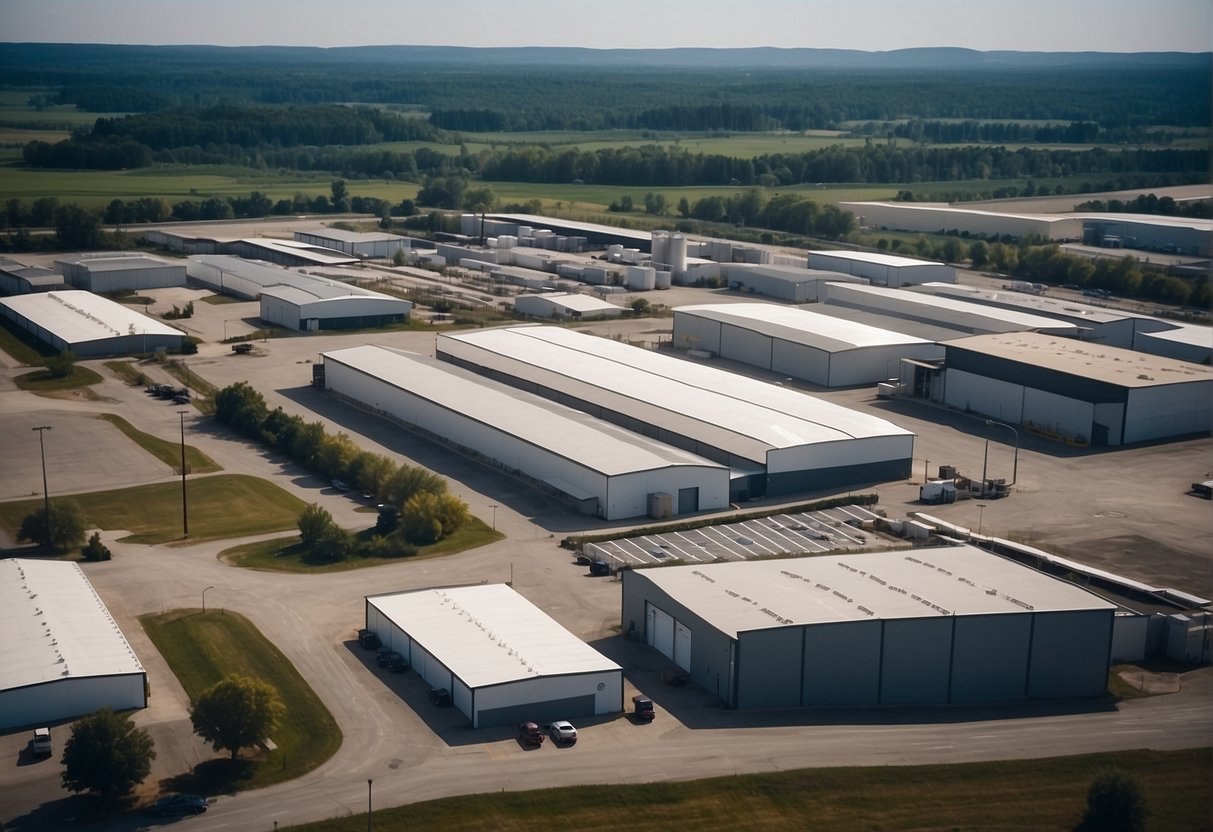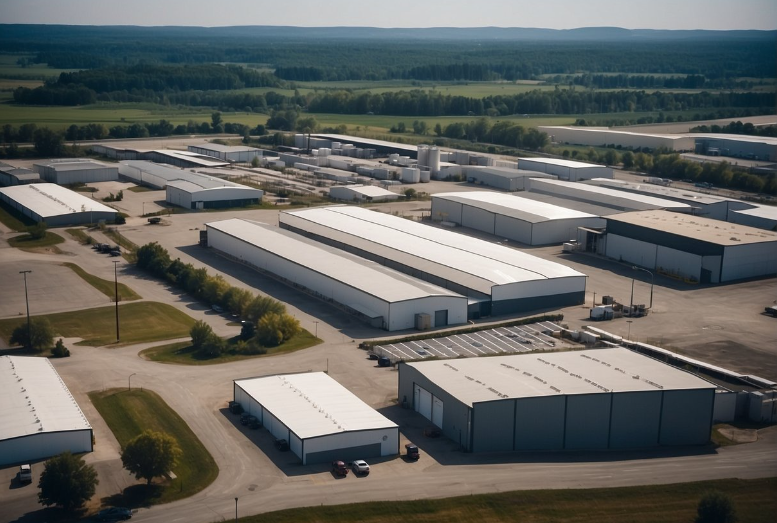Commercial metal buildings have become a mainstay in various industries due to their durability, cost-effectiveness, and flexibility. These structures are crafted from materials like steel, which is renowned for its strength and longevity, making it an ideal choice for a wide range of applications. From warehouses and factories to retail stores and office buildings, metal buildings are increasingly favored for their ability to meet diverse architectural and functional requirements.

The design adaptability of commercial metal buildings allows for tailored configurations that serve specific industry needs. They can accommodate heavy machinery in manufacturing settings, provide open floor spaces for storage in warehouses, and even support the aesthetic demands of modern retail outlets. This level of versatility is why sectors as varied as agriculture, automotive, and aerospace rely on metal buildings for their operations.
Economic efficiency is another exciting aspect of commercial metal buildings that appeal across sectors. These structures often entail lower construction costs compared to traditional building materials, due in part to the streamlined prefabrication process. The energy efficiency of metal buildings also helps business owners reduce operating costs, while their resistance to fire, pests, and extreme weather minimizes maintenance expenses, showcasing a commitment to sustainability and cost control throughout their lifecycle.
Design Flexibility and Aesthetics of Metal Buildings
Commercial metal buildings offer a broad range of design possibilities while maintaining a high level of aesthetic appeal. These structures can be tailored to meet specific industry needs without compromising on style.
Customization Potential
Commercial metal buildings are highly customizable in terms of size, layout, and function. They can be scaled up or down to accommodate different business sizes, from small workshops to expansive warehouses. Interior spaces are easily segmented or left open for maximum flexibility. Key features often include:
- Adjustable Interior Walls: Adaptable to changing business needs.
- Varied Roof Heights: Can be modified for different operational requirements.
Architectural Versatility
These buildings can be designed to suit a variety of architectural styles, blending seamlessly with their surroundings or standing out as modern landmarks. They support a variety of roofing styles, from traditional gabled roofs to flat or sloped designs for specific aesthetic or functional purposes. Important considerations include:
- Facade Materials: Metal panels, glass, brick, or stone can be combined for diverse looks.
- Structural Shapes: From simple rectangles to complex geometrical designs, they can take on numerous forms.
Aesthetic Appeal
The appearance of commercial metal buildings can be significantly enhanced with a range of finishing options and colors. Metal buildings can exhibit a sleek, contemporary appearance or mimic other materials, like wood or stone, for a more traditional look. They may also feature:
- Vibrant Colors: Offering bold or subtle visual impact.
- Textured Finishes: Providing depth and character to metal surfaces.
By utilizing modern design techniques and materials, commercial metal buildings comfortably meet the dual demands of function and style.
Durability and Maintenance
Commercial metal buildings are recognized for their strength and long-term performance. These structures are designed to withstand various environmental conditions and require minimal maintenance, contributing to their life cycle cost-effectiveness.
Weather Resistance
Commercial metal buildings are engineered to resist adverse weather conditions, such as heavy rain, snow, and high winds. Materials used often include high-quality steel with protective coatings to prevent rust and corrosion. These coatings are:
- Galvalume: A combination of aluminum, zinc, and silicone that offers superior protection against corrosion.
- Galvanized: A zinc coating that provides robust protection against rusting.
Structural design features like reinforced fastening systems ensure stability during environmental stresses.
Longevity and Lifecycle
Metal buildings are constructed with durability as a priority, offering an extended lifecycle compared to traditional construction materials. Typical commercial metal buildings can last for decades, with some warranties covering up to 40 years. Factors that contribute to this longevity include:
- High-quality steel
- Protective coatings
- Robust construction techniques
This longevity reduces the need for frequent rebuilding or extensive renovations, cutting down on long-term expenses.
Ease of Maintenance
The maintenance of commercial metal buildings is relatively straightforward, thanks to the durability of the materials used. The structures often require only occasional cleaning and inspections to ensure there are no damages or weak points. Key maintenance tasks include:
- Inspections: Routine checks for any signs of damage or wear.
- Cleaning: An annual cleaning to maintain the appearance and functionality of the metal surfaces.
- Minor Repairs: Prompt action on minor issues, like tightening loose fasteners to prevent future problems.
By adhering to these simple maintenance routines, businesses can ensure the longevity of their commercial metal buildings and safeguard their investment.
Functional Advantages for Various Industries
Commercial metal buildings offer unique advantages that make them particularly suitable for a variety of industrial applications. They are valued for their durability, cost-effectiveness, and flexibility in design.
Manufacturing and Warehousing
For the manufacturing and warehousing sector, commercial metal buildings provide expansive interior spaces that can be easily customized to fit large machinery, assembly lines, and storage racks. With high ceilings and the ability to support heavy loads, these structures are ideal for industrial operations. Their clear span capabilities mean fewer internal supports are needed, maximizing usable space.
- Durability: Resistance to environmental factors such as rust, mold, and pests.
- Customization: Adaptable layouts for machinery, workflow, and storage needs.
Retail and Commercial Spaces
Retail and commercial industries benefit significantly from the visually appealing designs and swift construction times of metal buildings. These structures can be aesthetically customized to align with corporate branding and customer appeal while maintaining functional retail space.
- Flexibility: Layouts can be adjusted to accommodate tenant changes and expansions.
- Maintenance: Low long-term upkeep costs due to material robustness.
Agricultural and Storage Uses
In agriculture, commercial metal buildings serve as reliable storage for equipment and livestock due to their climate-controlled environments and strong resistance to weather extremes. They are often used for barns, silos, and storage sheds, supporting the efficient and safe storage of perishable goods.
- Ventilation: Structures can be designed for optimal air flow, crucial for livestock and crop storage.
- Insulation options: Keep products at ideal temperatures, reducing waste and spoilage.
Modular and Temporary Structures
Commercial metal buildings excel in situations where temporary or portable structures are required. Their modular nature allows for quick assembly and disassembly, making them perfect for temporary offices, disaster relief, and event hosting. The potential for relocating these structures provides exceptional value for industries in need of mobile solutions.
- Speed of construction: Erected and operational in a fraction of the time compared to traditional materials.
- Reusability: The structures can be taken down, transported, and reassembled with minimal resource waste.
Sustainability and Energy Efficiency
Commercial metal buildings are increasingly recognized for their sustainability and energy efficiency. These structures are designed with materials that can be recycled, and boast features that significantly reduce energy consumption.
Recyclability and Eco-Friendliness
Commercial metal buildings are synonymous with environmental responsibility due to the recyclability of steel. The American Iron and Steel Institute reports that steel is the most recycled material on earth. In the construction of commercial metal buildings, most of the steel used contains recycled content, which can be broken down into the following components:
- Structural Steel: Approximately 93% recycled content
- Rebar: Roughly 98% recycled content
Furthermore, at the end of their life cycle, these buildings can be dismantled, and nearly all their materials can be recycled without loss of quality. This minimizes waste and reduces the need for new raw materials, thereby conserving natural resources.
Energy-Efficient Design Options
Design advances in commercial metal buildings contribute substantially to energy efficiency. Utilizing the following options helps to reduce the carbon footprint of these structures:
- Insulation: High-performance insulation systems significantly lower heating and cooling demands.
- Reflective Roofing: Reflective roofing materials can deflect a substantial portion of solar heat, maintaining cooler building temperatures in hot climates.
- Cool Roofing: Cool roofing technology goes beyond reflection, actively removing heat from the building to reduce energy costs.
- Natural Lighting: Skylights and light-transmitting panels reduce the reliance on artificial lighting during the day.
These energy-efficient design innovations have made commercial metal buildings popular choices for companies aiming to reduce their impact on the environment while also curtailing operational costs.


































